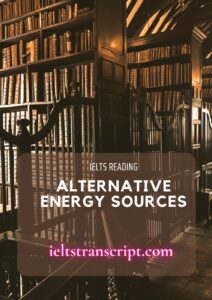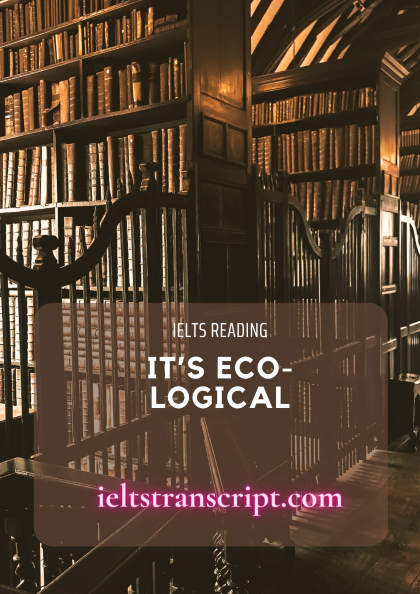- Đối với sản phẩm có giá: Sau khi chúng tôi ghi nhận thông tin đã thanh toán sản phẩm của bạn, sản phẩm sẽ được mở khóa và bạn có thể xem trực tiếp và tải tài liệu sản phẩm.
- Đối với thành viên trả phí: Bạn có thể mua và thanh toán sản phẩm với giá 0đ để tải tài liệu sản phẩm.
- Bạn có thể liên hệ với chúng tôi để được hỗ trợ mở khóa sản phẩm sớm nhất.
ALTERNATIVE ENERGY SOURCES
- Chúng tôi chấp nhận các phương thức thanh toán sau đây: Thẻ tín dụng, thẻ ghi nợ, PayPal, chuyển khoản ngân hàng và tiền mặt.
Chúng tôi sẽ không thu thêm phí cho bất kỳ hình thức thanh toán nào.
- Nếu bạn gặp vấn đề về sản phẩm của chúng tôi trong thời gian sử dụng, vui lòng liên hệ với chúng tôi để được hỗ trợ xử lý sớm nhất nhé.
Xem trước mẫu
ALTERNATIVE ENERGY SOURCES
A There are many reasons why we are looking towards alternative energy sources. With many countries signing the Kyoto Treaty, efforts to reduce pollutants and greenhouse gases are a primary focus in today’s culture. Alternative, or renewable, energy sources show significant promise in helping to reduce the amount of toxins that are byproducts of energy use. Not only do they protect against harmful by-products, but using alternative energy helps to preserve many of the natural resources that we currently use as sources of energy. To understand how alternative energy use can help preserve the delicate ecological balance of the planet, and help us conserve the non-renewable energy sources like fossil fuels, it is important to know what types of alternative energy are out there.
B Alternative energy sources are resources that are constantly replaced and are usually less polluting. They are not the result of the burning of fossil fuels or splitting of atoms. The use of renewable energy is contributing to our energy supply. Some alternative energy sources are: biomass energy, geothermal energy, hydroelectric power, solar power, wind power, fuel cells, ocean thermal energy conversion, tidal energy, and wave energy.
C Biomass is renewable energy that is produced from organic matter. Biomass fuels include wood, forest and mill residues, animal waste, grains, agricultural crops, and aquatic plants. These materials are used as fuel to heat water for steam or processed into liquids and gases, which can be burned to do the same thing. With more use of biomass at lower production costs and better technology, the United States could generate as much as four-and-a-half times more biopower by 2020. It is estimated that biomass will have the largest increase among renewable energy sources, rising by 80 percent and reaching 65.7 billion KW in 2020.
D Geothermal energy uses heat from within the earth. Wells are drilled into geothermal reservoirs to bring the hot water or steam to the surface. The steam then drives a turbine-generator to generate electricity in geothermal plants. In some places this heat is used directly to heat homes and greenhouses, or to provide process heat for businesses or industries. Reykjavik, Iceland, is heated by geothermal energy. Most geothermal resources are concentrated in the western part of the United States. Geothermal heat pumps use shallow ground energy to heat and cool homes, and this technique can be employed almost anywhere. With technological improvements much more power could lie generated from hydrothermal resources. Scientists have been experimenting by pumping water into the hot dry rock that is 3-6 miles below the earth’s surface for use in geothermal power plants.
E Hydroelectric (hydropower) energy employs the force of falling water to drive turbine-generators to produce electricity. Hydropower produces more electricity than any other alternative energy source. It has been estimated that hydroelectric power will decline from 389 billion KW in the US in 1999 to 298 billion KW in 2020. This decline is expected because most of the best sites for hydropower have already been developed and because of concerns about the adverse impact that large-scale hydroelectric facilities may have on the environment.
F Solar energy is generated without a turbine or electromagnet. Special panels of photovoltaic cells capture light from the sun and convert it directly into electricity. The electricity is stored in a battery. Solar energy can also be used to directly heat water for domestic use (solar thermal technology). The domestic photovoltaic (PV) industry could provide up to 15% of new US peak electricity capacity that is expected to be required in 2020.
G Wind energy can be used to produce electricity. As wind passes through the blades of a windmill, the blades spin. The shaft that is attached to the blades turns
...Để xem được đầy đủ nội dung và tải dữ liệu, bạn phải trở thành thành viên của chúng tôi và trả phí cho tài liệu (nếu có)











